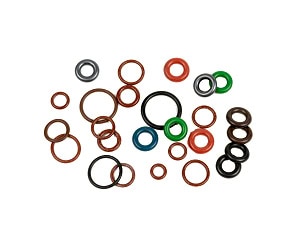When it comes to rubber and urethane seals, understanding their shelf life is essential to ensure optimal performance and reliability. Seals are commonly used in various industries, including automotive, manufacturing, and engineering. Knowing how long these seals can be stored before their properties begin to degrade is crucial for maintaining their effectiveness.
Understanding Rubber Seals
Rubber seals, commonly made from materials such as neoprene, nitrile, or silicone, are widely used for their flexibility, resistance to temperature extremes, and durability. However, rubber seals are not invincible and can deteriorate over time when not stored or used correctly.
The shelf life of rubber seals can vary depending on several factors.
Rubber seals should be stored in a cool, dry environment away from direct sunlight, chemicals, ozone, and extreme temperatures. Exposure to these elements can accelerate the aging process and lead to premature deterioration.
Different types of rubber have varying resistance to environmental factors. It’s important to consult the manufacturer’s guidelines to determine the expected shelf life of a specific rubber seal material.
The quality and formulation of the rubber material used in the seals can impact their overall shelf life. Higher-quality seals are often designed to last longer and maintain their properties for an extended period.
Understanding Urethane Seals
Urethane seals, also known as polyurethane seals, are valued for their excellent wear resistance, high load-bearing capabilities, and resistance to oil and solvents. They are commonly used in hydraulic systems, pneumatic applications, and heavy machinery.
The shelf life of urethane seals can also be influenced by various factors:
Similar to rubber seals, urethane seals should be stored in a controlled environment with low humidity and moderate temperatures. Exposure to excessive moisture and heat can degrade their properties.
The formulation of the urethane material, including additives and fillers, can affect its resistance to environmental factors and determine its expected shelf life.
It is crucial to follow the manufacturer’s guidelines for the storage and handling of urethane seals. They may provide specific instructions or recommendations for prolonging the shelf life of their products.
Inspecting and Replacing Seals
Regardless of the type of seal, it’s important to regularly inspect them for signs of deterioration or damage, even if they are within their expected shelf life. Common indicators of seal degradation include cracks, hardening, swelling, or a loss of elasticity. If any of these signs are present, it is advisable to replace the seals to prevent potential failures and maintain system integrity.
The shelf life of rubber and urethane seals can vary depending on storage conditions, seal type, and material quality. Proper storage in controlled environments and adherence to manufacturer’s recommendations are essential for prolonging the lifespan of these seals. Regular inspections and proactive replacement when signs of degradation are detected will help ensure the optimal performance and reliability of the seals in various industrial applications.

Parker OES Group recommends the following:
5 years: Polyurethane (milleable)
15 years: Nitrile, Neoprene, SBR, HNBR, Polyacrylate
Unlimited: Ethylene Propylene, Fluorocarbon, Perfluorinated Elastomer, Butyl, Silicone, Tetrafluoroethylene Propylene (Aflas®), Fluorosilicone.


